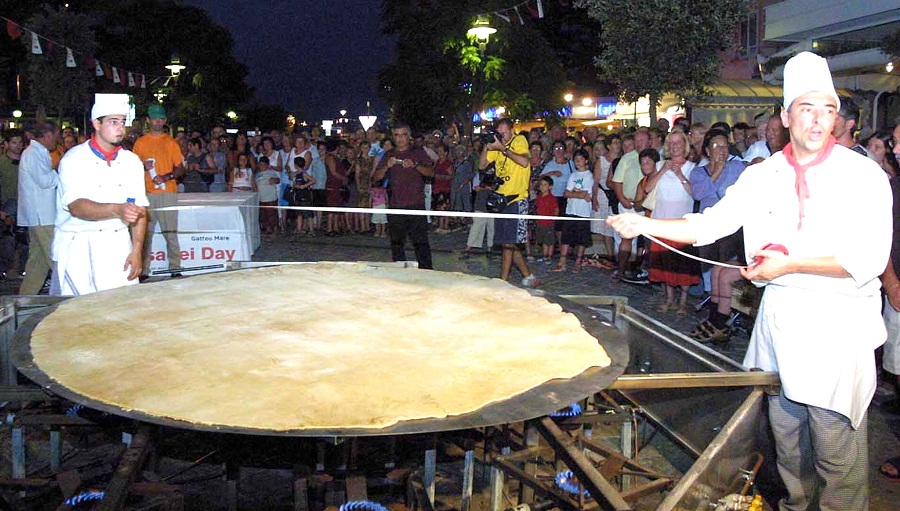Geographically speaking, Emilia Romagna is composed of two parts: to the west Emilia, with its sweeping plains and orchards, and to the east Romagna, which extends along the Adriatic coast. In terms of gastronomy, the region is a mosaic of surprises, with no clear overall pattern. Each city has its own specialities, often real treasures of Italian cuisine. The traditional food is robust and hearty, and a real treat for the taste buds.
If we had to elect the king of Emilia’s cooking, there would be no doubt: the tortellino. Bologna is its homeland, and it is a real pleasure to taste it in one of the traditional trattorias of the old town, between Piazza Maggiore and the porticoes, near the Asinelli and Garisenda towers. With a filling which exalts the taste of the mortadella, tortellini alla Bolognese are served with meat ragù or in a rich chicken stock. According to tradition, the tortellino represents Venus’s belly button. In reality, king tortellino is surrounded by a whole entourage of courtiers, variations on the theme of stuffed pasta, created in the region’s various cities: Ferrara and the whole of Romagna specialize in cappelleti. In Ferrara, the filing is made with turkey or pumpkin (in which case the ravioli are called cappellacci), while in Romagna fresh raviggiolo cheese is used. The tortelloni of Piacenza are filled with ricotta and greens. In Modena ravioli are filled with roast meat, while Parma is the city of anolini, served in a ham sauce and covered with grated parmesan.
The traditional cookery of Emilia is a celebration of fresh egg pasta: in addition to tortellini, another must is lasagne (pasta sheets with ragù and cheese) and the various sizes of tagliatelle, always served with rich meat sauces. The character of the people of Emilia Romagna is a perfect reflection of their gastronomic tradition: generous, warm, hearty and fun. To discover this tradition, just follow one of the many “food and wine trails“, which will take you on a tour of the various provincial specialities and typical products of each area. You might well find yourself in a town and country restaurants, or trattorie, having a chat with the other diners around a wonderful spread, perhaps including a colourful plate of salami and hams. Pork specialties are in fact one of the great gastronomic treasures of Emilia Romagna. Pride of place goes to prosciutto crudo di Parma, excellent for antipasti and snacks, superb if accompanied by flakes of parmigiano reggiano, the great parmesan cheese typical of this region, well-known, and imitated the world over. Then there is culatello, a raw hand made using pork loin, a specialty of Busseto, the birth place of Giuseppe Verdi, and zampone, which is cooked with braised lentils in the traditional New Year’s Eve dish. In Modena (where it was invented, as was the famous balsamic vinegar), it is often served as part of a dish of mixed boiled meats, along with beef, veal and turkey, accompanied by a tasty herb sauce. Nor should we forget the highly popular mortadella from Bologna, coppa and pancetta from Piacenza, salami from Felino and many others.
The salami and hams of Emilia make a tasty snack for holidaymakers, and are sold in small shops or kiosks in Romagna, where they are used to fill a piadina romagnola, a flat unleavened bread (rather like a tortilla), or a tigella (a kind of bread), a specialty of the Apennines.
In Romagna, you can experience the region’s seafood cooking, with its delicious warm flavors. These range from the classic brodetto, with squid, rascasse and grey ullet, to fried fish, and spit-roasted fish, cook over wood or vine charcoal, which produce a distinctive aroma. Local specialties include seppie in umido con piselli (stewed cuttlefish with peas) and canocchie alla griglia (grilled mantis shrimps). In Comacchio, a coastal town, famous for its marshlands, eels are a real delicacy, and are usually cooked on the spit.
Follow @castaritaHK / Courtesy of the Italian State Tourist Board

